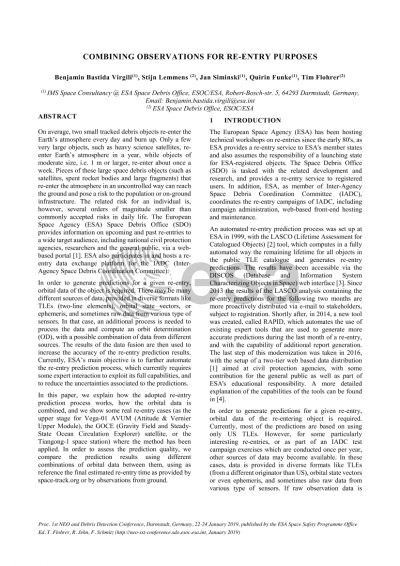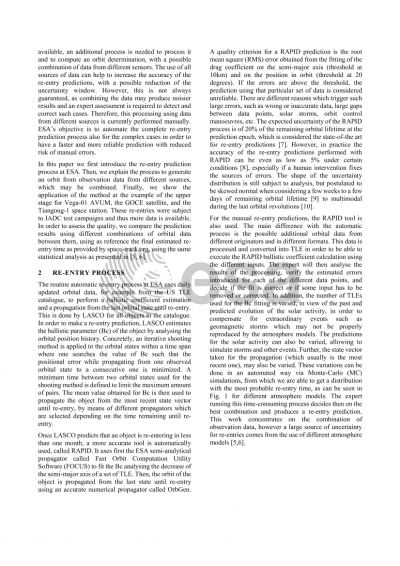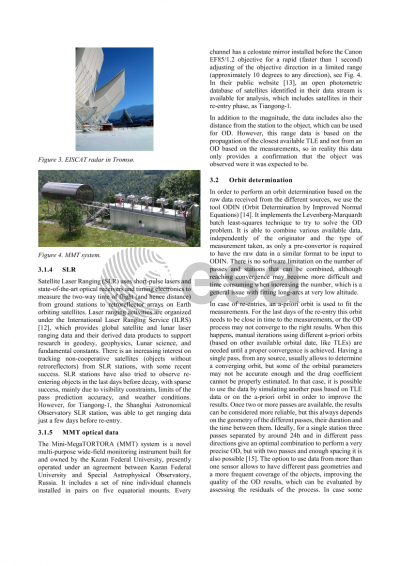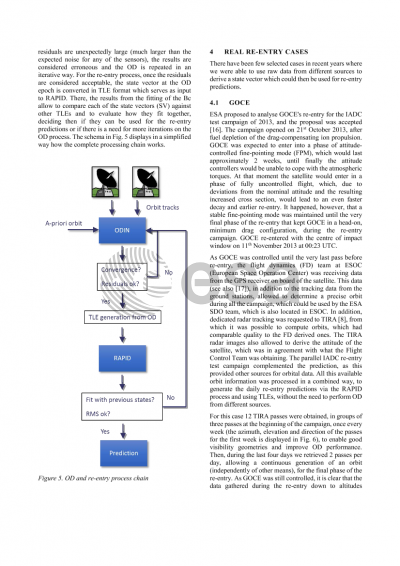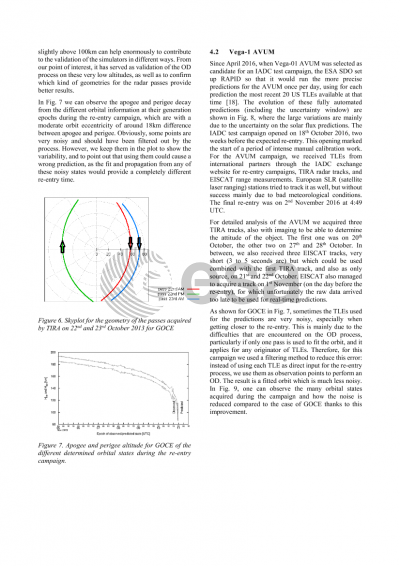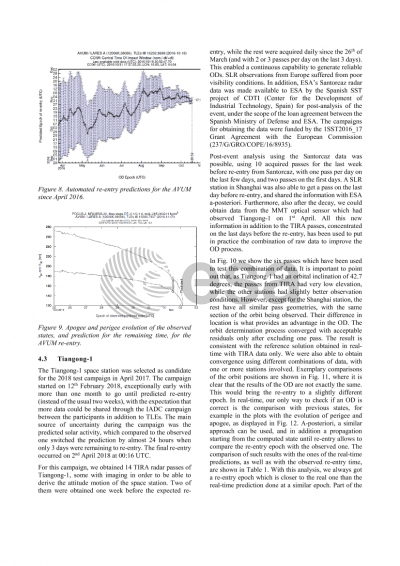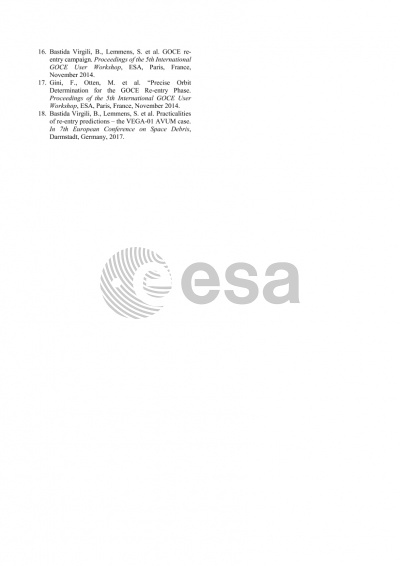Document details
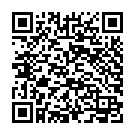
Abstract
On average, two small tracked debris objects re-enter the Earth’s atmosphere every day and burn up. Luckily, only a few very large objects, such as heavy science satellites, re-enter Earth’s atmosphere in a year, while objects of moderate size, i.e. 1 m or larger, re-enter about once a week. Pieces of these large space debris objects (such as satellites, spent rocket bodies and large fragments) that re-enter the atmosphere in an uncontrolled way can reach the ground and pose a risk to the population. The related risk for an individual is, however, several orders of magnitude smaller than commonly accepted risks in daily life. ESA’s Space Debris Office provides information on upcoming and past re-entries to a wide target audience, including national protection agencies, researchers and the general public, via a web-based portal. ESA also participates in and hosts a re-entry data exchange platform for the IADC (Inter-Agency Space Debris Coordination Committee).
In order to generate predictions for a given re-entry, orbital data of the object is required. There may be many different sources of data, provided in diverse formats like TLEs, orbital state vectors, or ephemeris, and even sometimes also raw data from various type of sensors. In that case, an additional process is needed to process the data and compute an orbit determination, with a possible combination of data from different sources. The results of the data fusion are then used to increase the accuracy of the re-entry prediction results. ESA’s main objective is to further automate the re-entry prediction process, which currently requires some expert interaction to exploit its full capabilities, and to reduce the uncertainties associated to the predictions.
In this paper, we explain how the re-entry process works, how the orbital data is combined, and we show some real re-entry cases (as the upper stage for Vega-01 AVUM, the GOCE satellite, or the Tiangong-1 space station) where the method has been applied. In order to assess the quality, we compare the prediction results using different combinations of orbital data between them, using as reference the final estimated re-entry time as provided by space-track.org.
Preview
